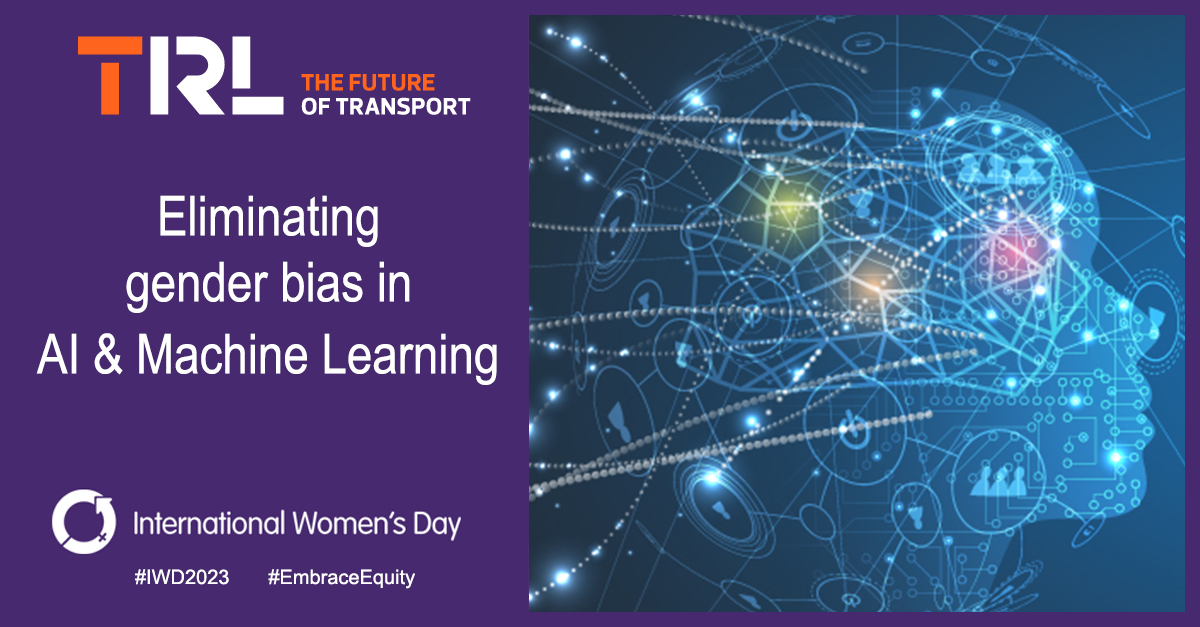Some of the main causes of this bias are outlined below – along with potential solutions.
Biased training data: Most algorithms are based on what’s known as ‘supervised learning’. This means that the model is trained using data that has been labelled in some way – e.g. labelling an image as man/woman or male/female, and then using the model to predict future labels for new images. If this training data is biased, the model will also be biased. Even worse, this can sometimes actually amplify the bias. Examples include:
- Skewed training data – such as women being underrepresented, as is the case in transport datasets. Models developed with this data can then fail to scale properly, and lead to biases which result in more errors for predictions involving women.
- Biased labelling of training data - labelling is performed (at least in part) by humans, who have repeatedly been shown to exhibit gender bias (sometimes unconsciously) – which is passed on to the model.
A consistent set of standards is needed for the AI/ML industry. This should include a rigorous data checking process, both for training data, and for new data that the algorithm will later learn from. Checking for the many types of data biases is more common in statistical modelling, and this needs to become more widely adopted by the AI/ML industry. Some solutions are very simple – such as ensuring that women are equally represented in training data.
Lack of diversity in the AI/ML industry: A 2018 LinkedIn analysis found that only 22% of AI professionals globally are women. Currently, only one in four GAFAM (Google, Apple, Facebook, Amazon, and Microsoft) employees is a woman. In addition, women make up 47% of the UK workforce yet only 20% of the transportation sector. These statistics are alarming. A wealth of research demonstrates that gender diverse teams benefit from enhanced perspectives, greater collaboration and improved productivity. They are also more likely to spot the various potential gender biases in the algorithms and data.
A greater effort is required within the AI and transportation sectors (and more widely) to address this severe lack of diversity, and each individual organisation has a responsibility to do this. Is your organisation doing this sufficiently?
Lack of algorithm transparency: Some algorithms such as deep learning models are “black box” – we do not know what is happening inside, and why they are making the predictions that they are. In addition, there is often an overreliance on them, which can be dangerous when their inner workings are not fully understood.
More research is needed to fully understand the inner workings of some of these sophisticated algorithms. As part of this solution, TRL are funding research into increasing the transparency and explainability of AI.In conclusion, this is a problem that we must all work together to solve. If we do nothing, then we are part of the problem. So I invite the reader to honestly ask themselves – am I part of the problem? And how can I get involved in finding solutions?
We must all take action now and if we do so, we can work together to bring about positive change. A consistent set of standards would be a good first step. Another would be greater awareness; educating all involved on the numerous biases that can creep into an analysis. Detecting these biases, and implementing effective solutions, must become a fundamental part of training in AI/ML. This is critical, since without these solutions, this bias will insidiously spread across organisations – and the industry as a whole.

